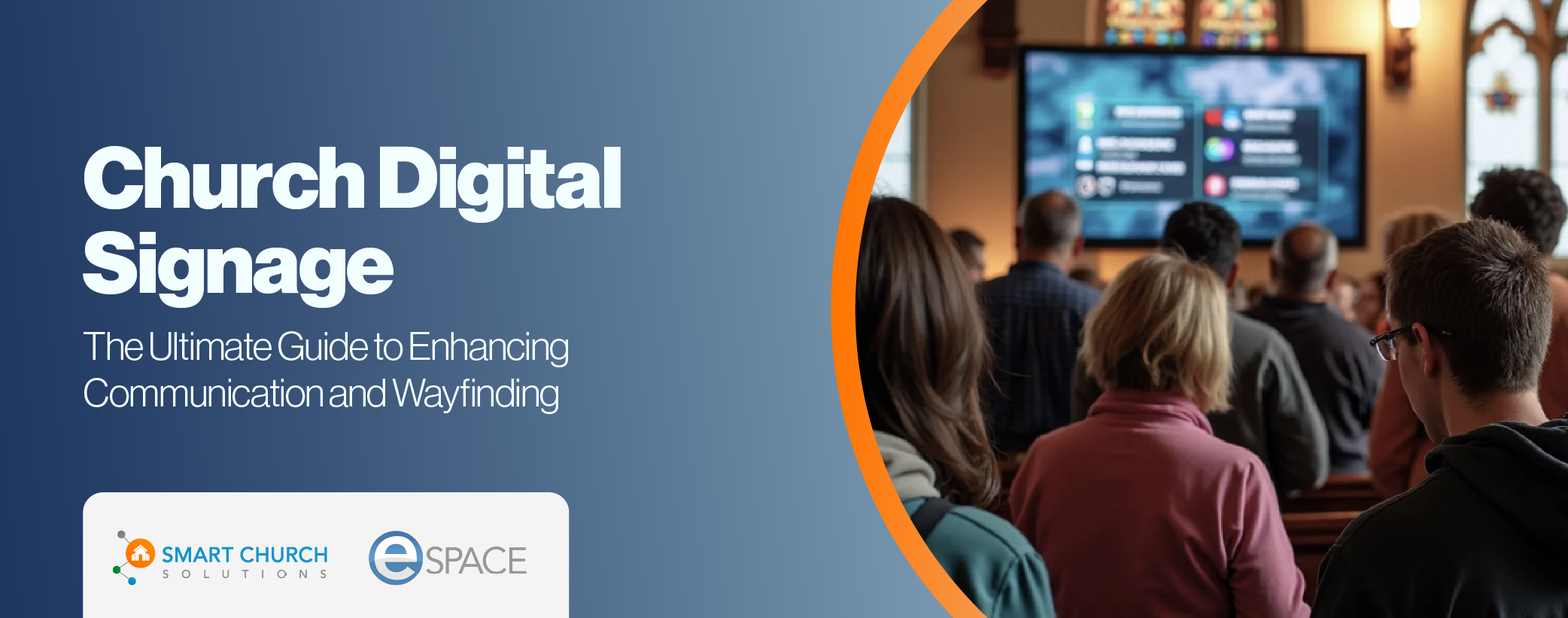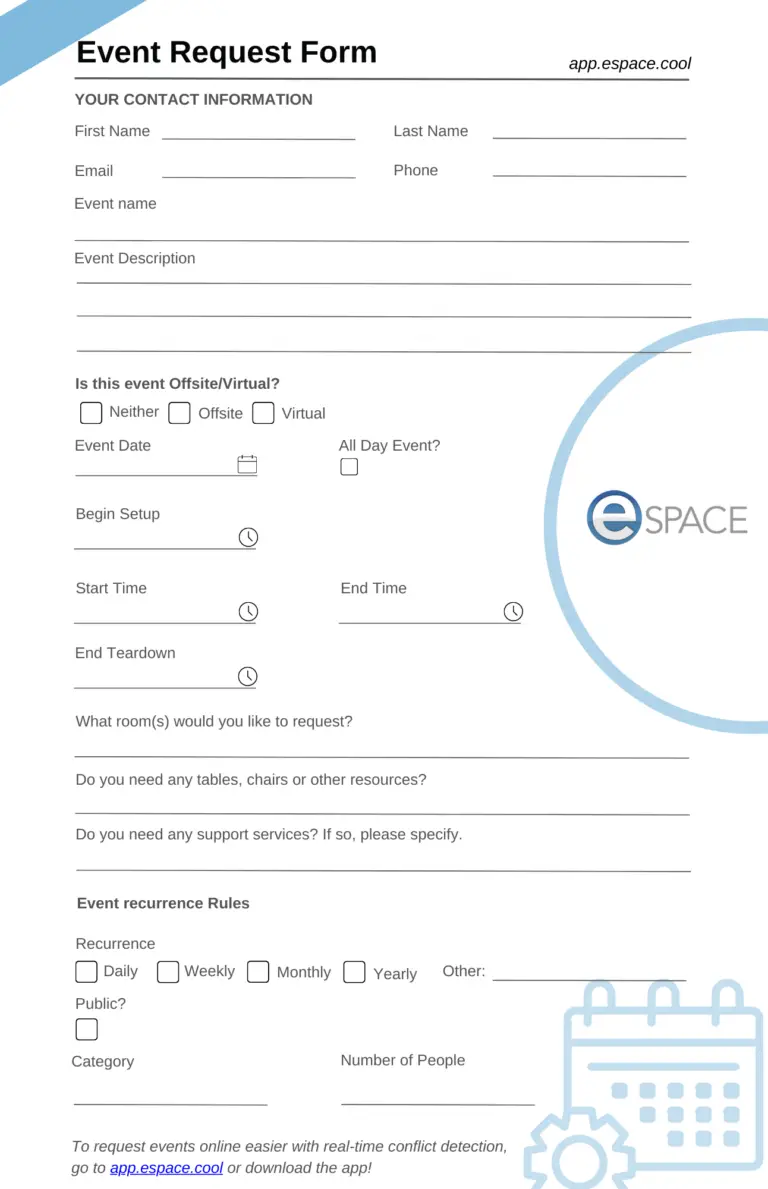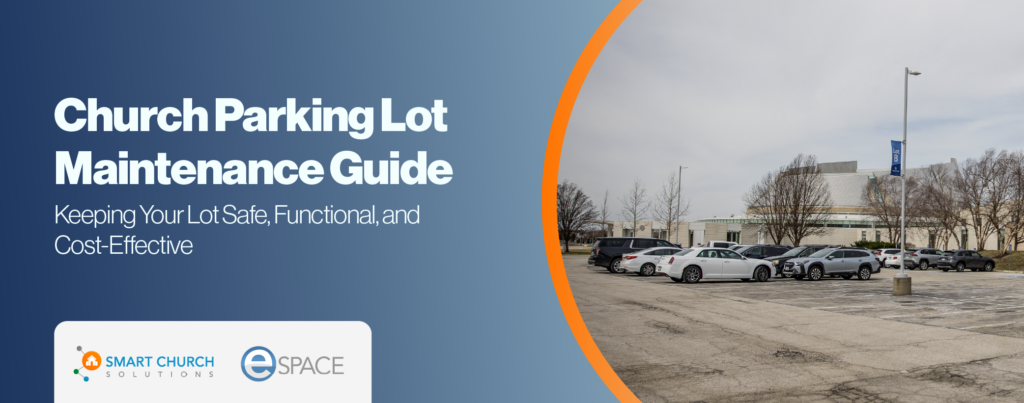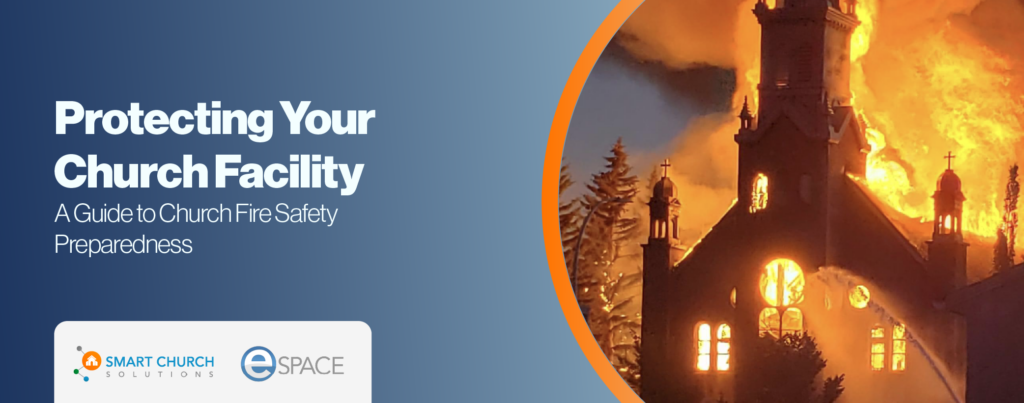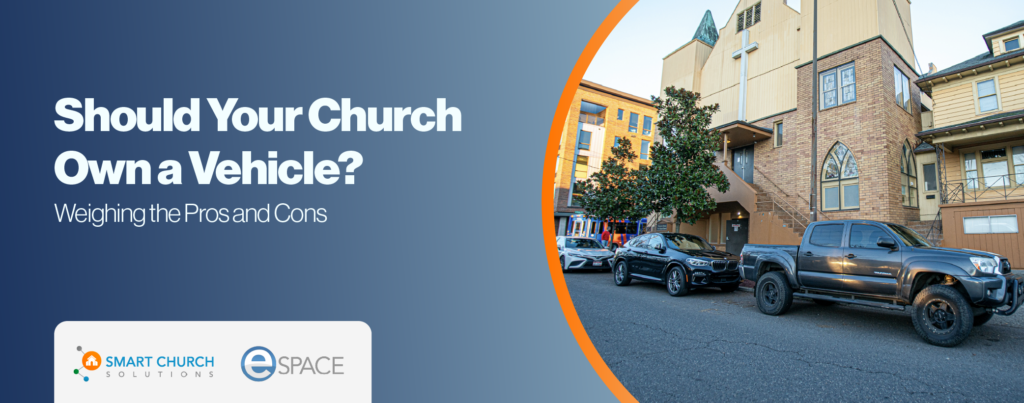Imagine a first-time guest stepping into your church, unsure where to go. Instead of feeling lost or hesitant, they’re greeted by clear, dynamic digital displays that guide them effortlessly to the worship center, children’s ministry, or upcoming events. This is the power of wayfinding—helping visitors confidently navigate your facility while creating a welcoming first impression.
Digital signage has revolutionized church communication, moving beyond static bulletin boards and outdated marquee signs to real-time, interactive messaging that enhances wayfinding and engagement. Whether welcoming guests, updating service schedules, or displaying emergency alerts, digital signage offers a seamless way to keep your congregation informed and connected.
The following guide explores how churches can leverage digital signage to improve communication, enhance facility management, and create a more welcoming experience.
What Is Church Digital Signage?
At its core, digital signage refers to electronic displays—such as TVs, tablets, or monitors—that share information dynamically. Unlike static signs, digital signage allows churches to update content quickly and efficiently. These displays ensure your congregation stays informed and engaged, whether it’s event schedules, announcements, or wayfinding maps.
Digital signage plays a crucial role in wayfinding, especially in large or multi-campus churches, where clear and dynamic displays can make the difference between a welcoming experience and a frustrating one.
Why Your Church Needs Digital Signage
1. Enhance the Guest Experience
Many guests, especially those visiting for the first time, prefer to find their way independently rather than asking for directions. Digital signage provides a self-service solution, making it easier for guests to navigate your facility confidently.
2. Keep Content Current
Unlike printed signs, digital signage can be updated in real-time. Whether changing service times, announcing events, or sharing emergency updates, digital displays keep your congregation informed without the hassle of reprinting signs.
3. Save Time and Resources
Regularly replacing paper signs or printed posters is time-consuming and costly. With digital signage, updates are as simple as a few clicks, freeing up your team to focus on other tasks.
4. Professional Appearance
A well-implemented digital signage system reflects professionalism and stewardship, reinforcing your church’s commitment to organization and care.
Types of Church Digital Signage
1. Lobby Displays
Use large monitors in high-traffic areas to welcome guests, share service times, and display upcoming events. Rotating content keeps the messaging fresh and engaging.
2. Room-Specific Displays
Place tablets or monitors outside meeting rooms to show room availability, scheduled events, or even allow room bookings in real-time.

3. Directional Signage
Digital wayfinding maps can guide guests to worship spaces, children’s ministries, or restrooms, reducing confusion and creating a smoother experience.
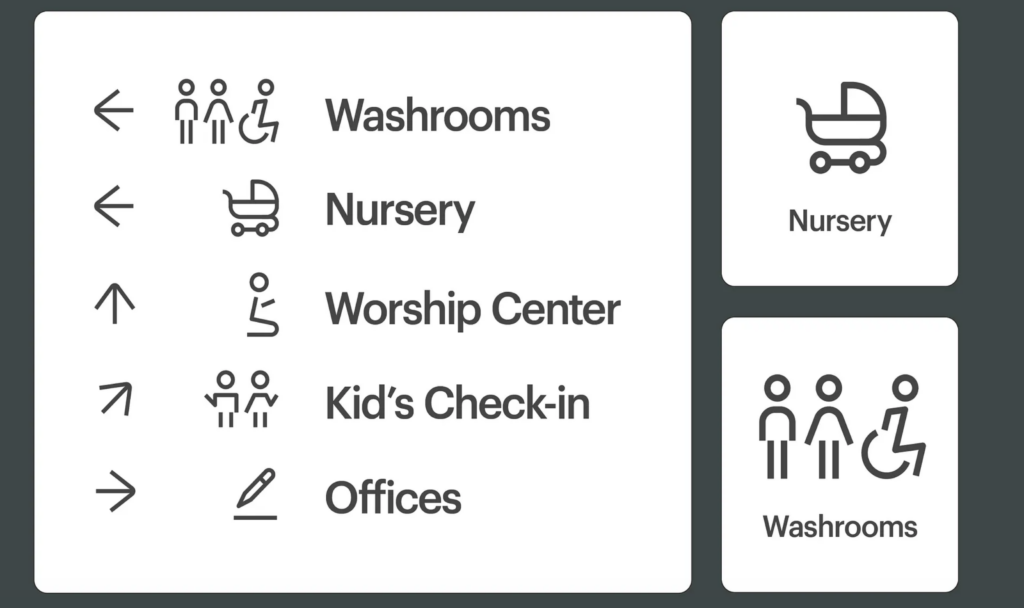
4. Event-Specific Displays
Highlight special services, ministry activities, or fundraisers on displays near relevant areas, such as the children’s wing or fellowship hall.

How to Implement Digital Signage in Your Church
1. Choose the Right Hardware
Modern TVs, tablets, and monitors with Wi-Fi or Ethernet connectivity are ideal. Depending on your church’s needs, you can use:
- Smart TVs with URL connectivity
- Tablets for room-specific displays
- Devices with Fire TV Sticks or Roku for additional functionality
2. Leverage a Robust Software Solution
Platforms like eSPACE make managing digital signage easy. With eSPACE’s Infospace module, you can:
- Sync event schedules directly to displays
- Customize content for different areas (e.g., children’s ministry, youth group, general congregation)
- Create dynamic slideshows with building maps, schedules, and announcements
3. Ensure Infrastructure Support
Work with your IT and facilities teams to:
- Install stable internet connections, such as Cat 6 cables, for areas with poor Wi-Fi.
- Provide secure power sources for all devices.
- Confirm your network is firewalled and secure to prevent unauthorized access
4. Design Compelling Content
Use clear, bold fonts and high-contrast colors to ensure readability. Incorporate your church’s branding and rotate content frequently to keep it fresh and relevant.
5. Test and Monitor Regularly
Run tests to ensure your displays are functioning correctly and providing accurate information. Regular maintenance prevents disruptions, especially during peak service times.
Best Practices for Digital Signage
- Segment Content by Audience: Tailor displays for specific groups, such as children, youth, or adults, to ensure messaging resonates.
- Integrate with Existing Systems: Sync your digital signage with platforms like eSPACE to automate updates and reduce manual input.
- Secure Your Devices: Protect your signage from tampering by locking devices and ensuring strong network security.
- Plan for Expansion: Start with high-priority areas like lobbies and grow your system as your church’s needs evolve.
Addressing Installation Challenges
Digital signage installation requires careful planning. Here are some common considerations:
- Power and Connectivity: Every screen needs a reliable power source and network connection. Hardwiring with Cat 6 cables often provides a more stable connection than relying on congested Wi-Fi networks.
- Device Placement: Choose visible, high-traffic locations for displays. Consider installing tablets outside rooms for quick access to schedules or booking options.
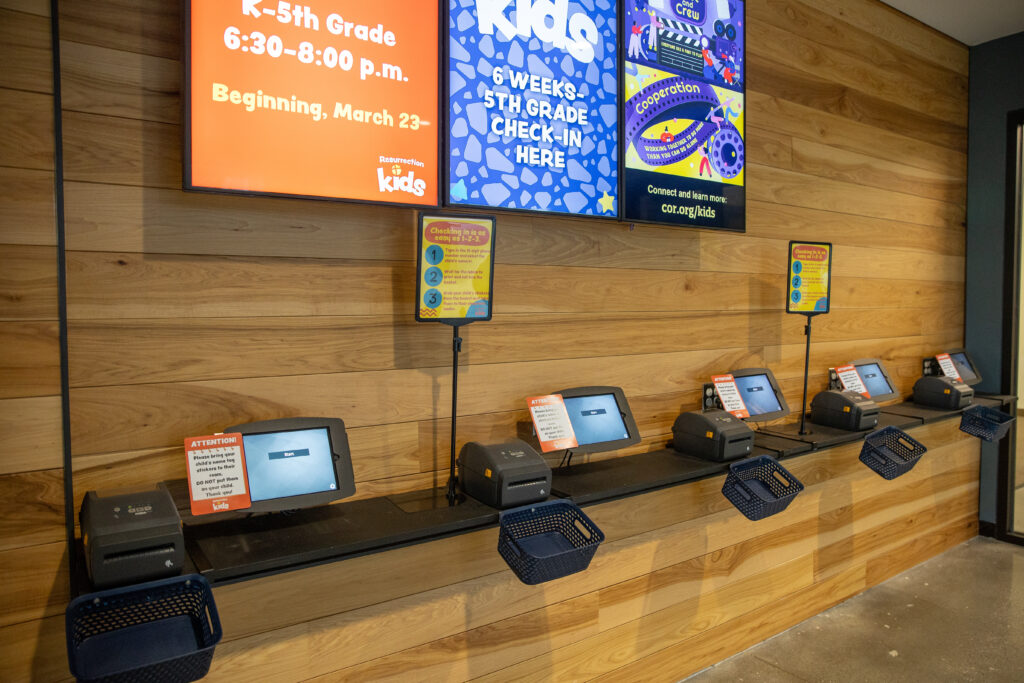
- Accessibility: Ensure displays are mounted at appropriate heights and comply with ADA standards for accessibility.
The Role of Digital Signage in Facility Stewardship
Digital signage is more than a communication tool—it’s a powerful component of facility stewardship. By integrating signage into your church’s event management system, you can streamline operations, reduce costs, and enhance the worship experience.
With eSPACE, digital signage becomes a seamless extension of your facility management. From syncing event schedules to creating dynamic content, the platform ensures your church remains organized and efficient.
Conclusion
Digital signage isn’t just about replacing bulletin boards—it’s about creating a seamless, engaging experience for your congregation. From guiding first-time visitors to keeping members informed in real-time, the right digital signage strategy enhances communication and facility management.
By integrating a robust solution like eSPACE, your church can streamline event updates, improve wayfinding, and ensure your signage stays current without the hassle of manual updates. Investing in digital signage is more than a technology upgrade—it’s a step toward better stewardship, improved accessibility, and a more connected church community.
Now is the time to improve your church’s communication. Are you ready to make the switch?


